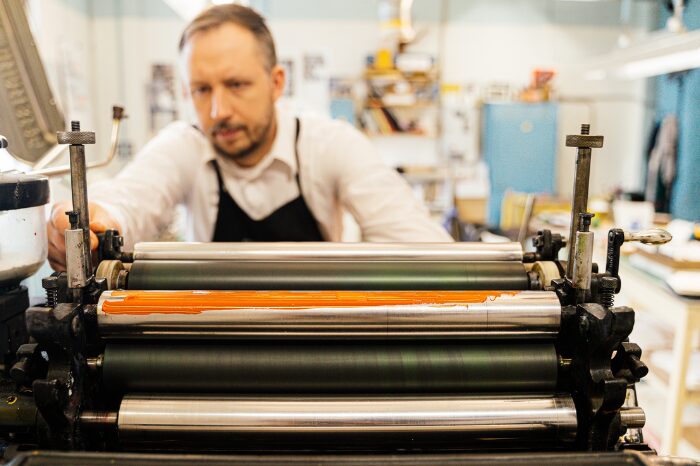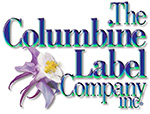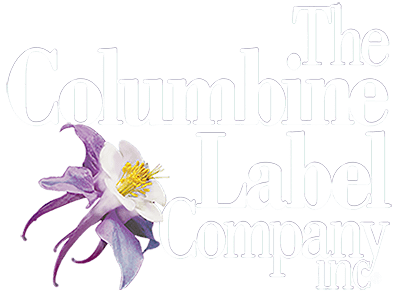Why Tariffs Matter in Product Labeling
You might not think twice about the label on your favorite beverage, the barcode on your cosmetics bottles, or the warning sticker on a power tool. But behind each of these is a complex and often global supply chain—and lately, that chain has been under increasing pressure.
Tariffs, essentially taxes on imported goods, are reshaping the economics of label manufacturing in the U.S. For label producers and customers alike, it’s no longer just about design and delivery. It’s about navigating international trade policies, material sourcing constraints, and volatile pricing—all of which impact what you pay for a finished label.
In this post, we’ll break down how tariffs are impacting the label industry, how prices are being affected, and how we’re actively mitigating these risks for our customers.
The Global Supply Chain Behind Every Label
Although most label printing takes place in the United States, the materials behind those labels often come from around the globe.
-
3M, one of the largest suppliers of label adhesives and films, produces many of its materials in China.
-
UPM Raflatac, a key supplier of face stocks and liners, manufactures heavily in Europe—particularly in Poland and Finland.
-
Inks, films, adhesives, and liners are frequently sourced or processed overseas, even when finished products are printed in the U.S.
This means that while the label may be “Made in the USA,” its upstream components, often have components that may originate from countries deeply affected by tariffs and trade policy.
Where Tariffs Hit the Label Industry Hardest
Direct Costs on Imported Goods
The most obvious impact of tariffs is the increased cost of imported goods. For label converters, this often means higher prices for:
-
Specialty films (especially polyethylene and polypropylene-based)
-
Release liners
-
Adhesives and coatings
-
Certain ink pigments and additives
If any of these come from tariff-affected countries, costs rise. For example, pressure-sensitive adhesives produced in China can be subject to tariffs of 10–25%, directly raising prices for converters.
Indirect Costs and Volatility
Even when materials aren’t directly tariffed, the market ripple effects cause:
-
Price instability
-
Longer lead times
-
Supplier uncertainty
-
Increased risk for last-minute substitutions
This can wreak havoc on planning and consistency, especially for manufacturers running custom or highly regulated packaging.
Steel Tariffs and U.S. Die Manufacturing

With U.S. tariffs on foreign steel from countries like China, Brazil, and Russia, the price of tool steel has surged. Even domestically-made dies are now more expensive and slower to produce, especially for complex or short-run designs.
This adds pressure not just to initial orders, but to any job that requires unique shapes or regular die updates.
The Printing Paradox: Made in the USA… With Global Parts
It’s easy to assume that if your labels are printed in America, global trade issues don’t affect you. The reality is more complicated.
Why Domestic Printing Doesn’t Mean Domestic Inputs
-
Inks may be blended in the U.S. but rely on pigments and solvents sourced from China or India.
-
Release liners often use base papers or silicone coatings imported from Europe.
-
Substrates—the face material of the label—can contain multiple layers or additives produced across three or four countries.
So even when the label is printed in a local shop, the materials have already crossed borders multiple times—making them vulnerable to tariffs, shipping delays, and political instability.
How Tariffs Impact Label Pricing
All of these pressures converge at the same place: price.
Why Label Prices Are Rising
-
A 10–25% tariff on key materials can add cents per label, especially on high-volume or multi-layered constructions.
-
Tools like dies are more expensive due to steel tariffs.
-
Alternative suppliers are in high demand, so switching doesn’t always mean saving.
For customers, this shows up as:
-
Higher per-unit label costs
-
Additional charges for tooling or expedited orders
-
Longer lead times for custom jobs
How We’re Responding: A Smarter Supply Chain Strategy
At our company, we’ve taken proactive steps to reduce exposure to tariff-related risks. Here’s how:
We Prioritize Non-Chinese Suppliers
We’ve structured our vendor network around partners who don’t rely on Chinese raw materials, helping avoid the brunt of the trade war fallout.
✅ Inks sourced from North America and Europe
✅ Substrates from EU-based or domestic providers
✅ Dies made in the U.S. with steel from low-risk regions
We Diversify Our Sources
Rather than relying on a single region or vendor, we keep multiple qualified suppliers for every material category. This allows us to pivot quickly when tariffs, shipping issues, or geopolitical problems arise.
We Communicate with Our Customers
Our customers get early warnings and real options when materials shift in price or availability. Whether it’s a more cost-stable alternative or a timeline adjustment, we believe in transparency—not surprises.
What the Future Holds for Label Manufacturing
Tariffs aren’t a temporary nuisance. They’re becoming a long-term feature of the global trade environment, especially in sensitive industries like chemicals, manufacturing, and materials.
What We’re Watching
-
Friendshoring & nearshoring: Movement away from China toward U.S. allies like Mexico, Canada, and the EU.
-
Domestic production incentives: Pushes to bring back American manufacturing for paper, plastics, and steel.
-
Shifting regulations: With each election cycle, the trade landscape resets. Agility matters.
We’re not just watching these changes—we’re building our operations around them. That way, our customers don’t have to worry about every headline. You can focus on your product, and we’ll focus on your packaging.
Conclusion: Labels May Be Small, But the Stakes Are Big
It’s easy to underestimate the complexity of a label. But when tariffs hit raw materials, the impact ripples all the way down the supply chain—to the print shop, the customer, and the end user.
At our company, we’ve invested in resilient, diverse, and transparent sourcing to reduce risk and protect your pricing. We’re not immune to global forces, but we’re prepared—and committed to keeping your labels reliable, affordable, and on time.
🙌 Looking for a labeling partner who thinks beyond the press?
Contact us today to see how our supply chain strategy can benefit your next project.


